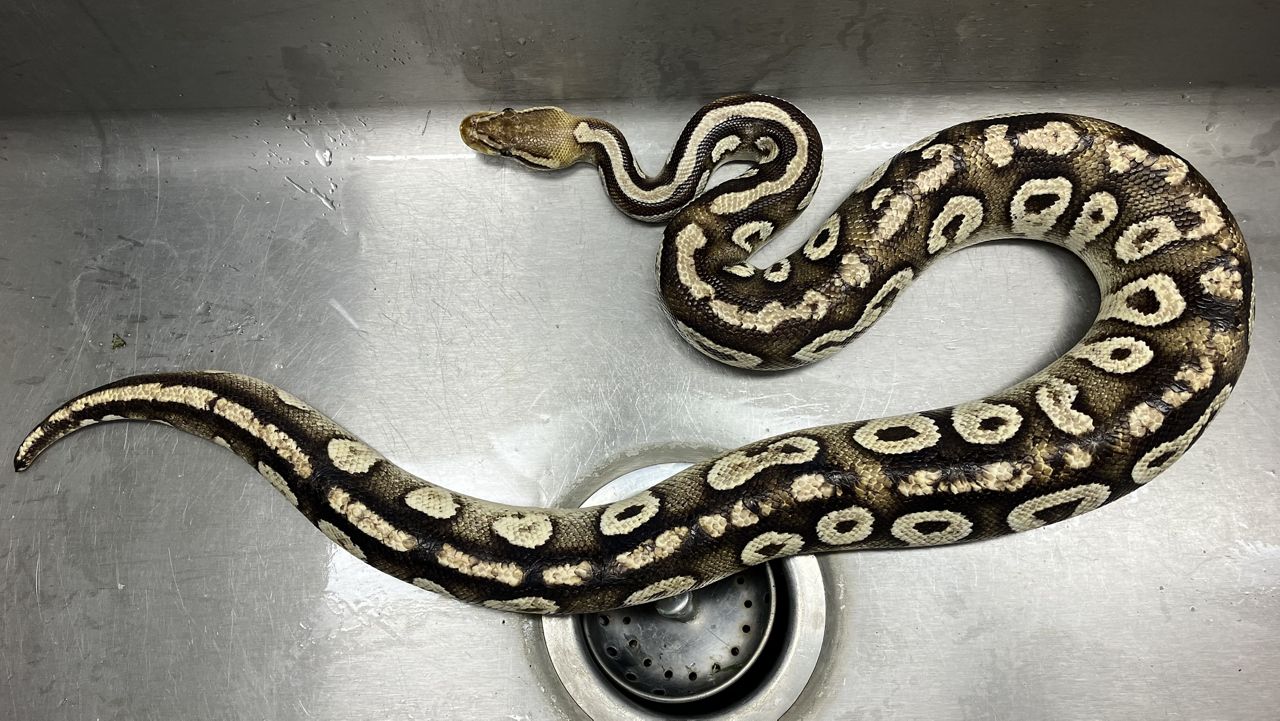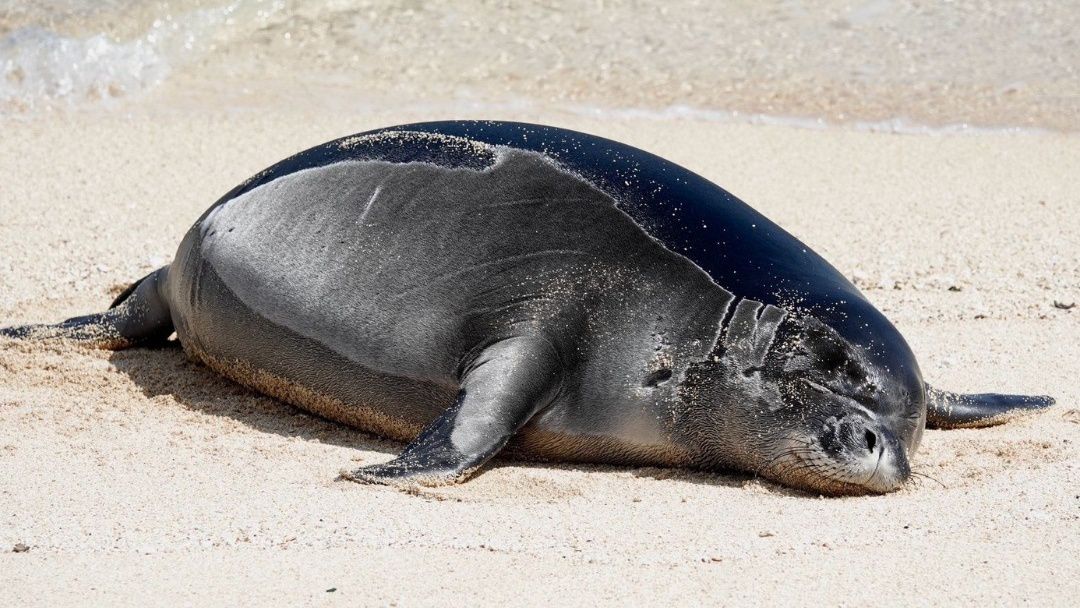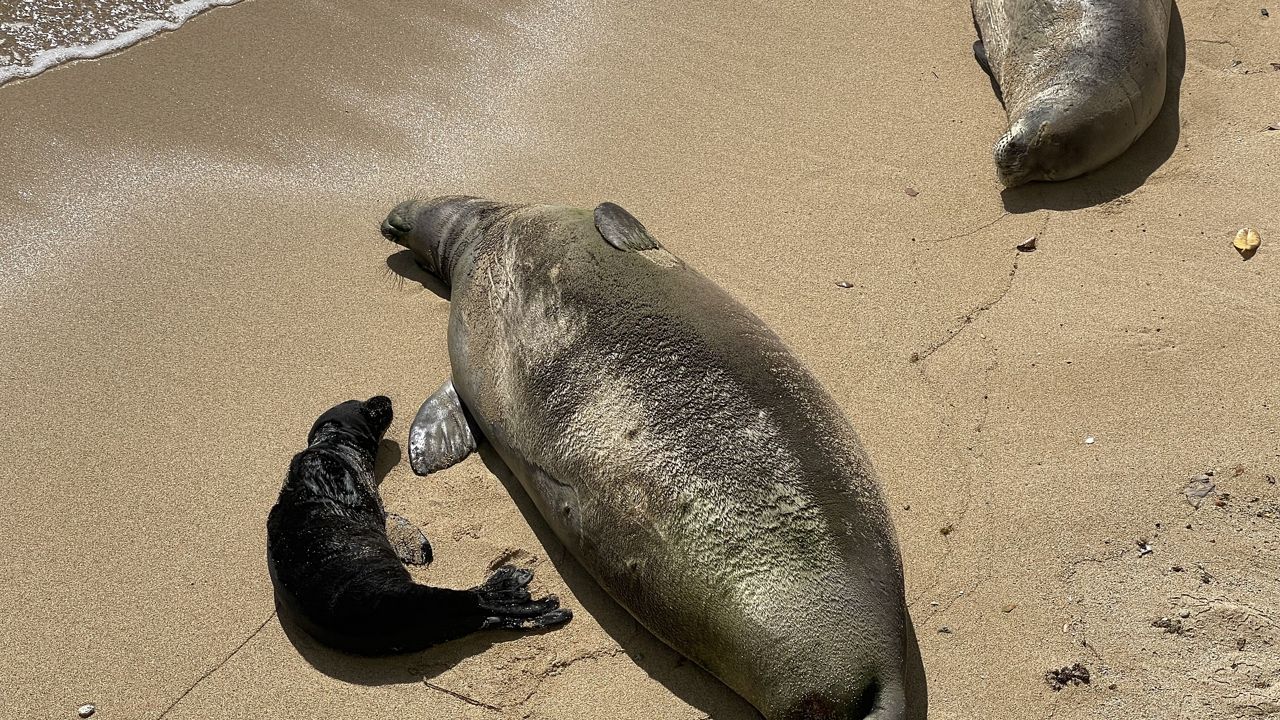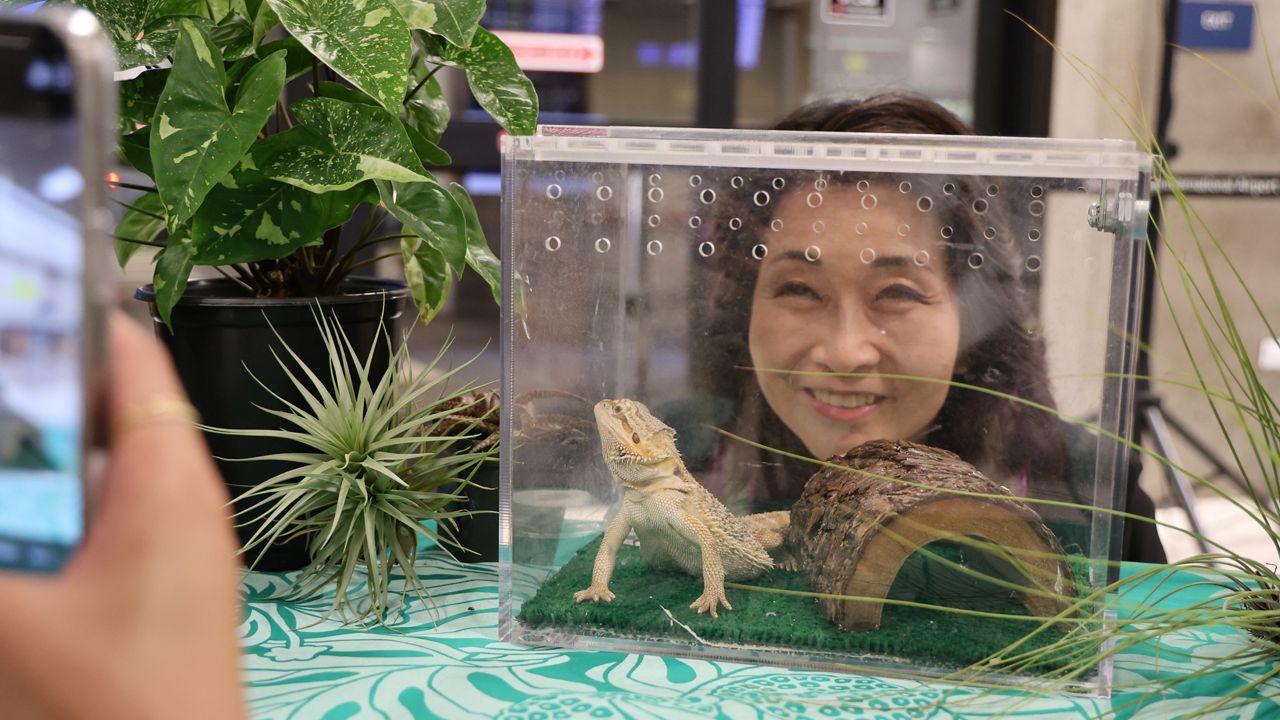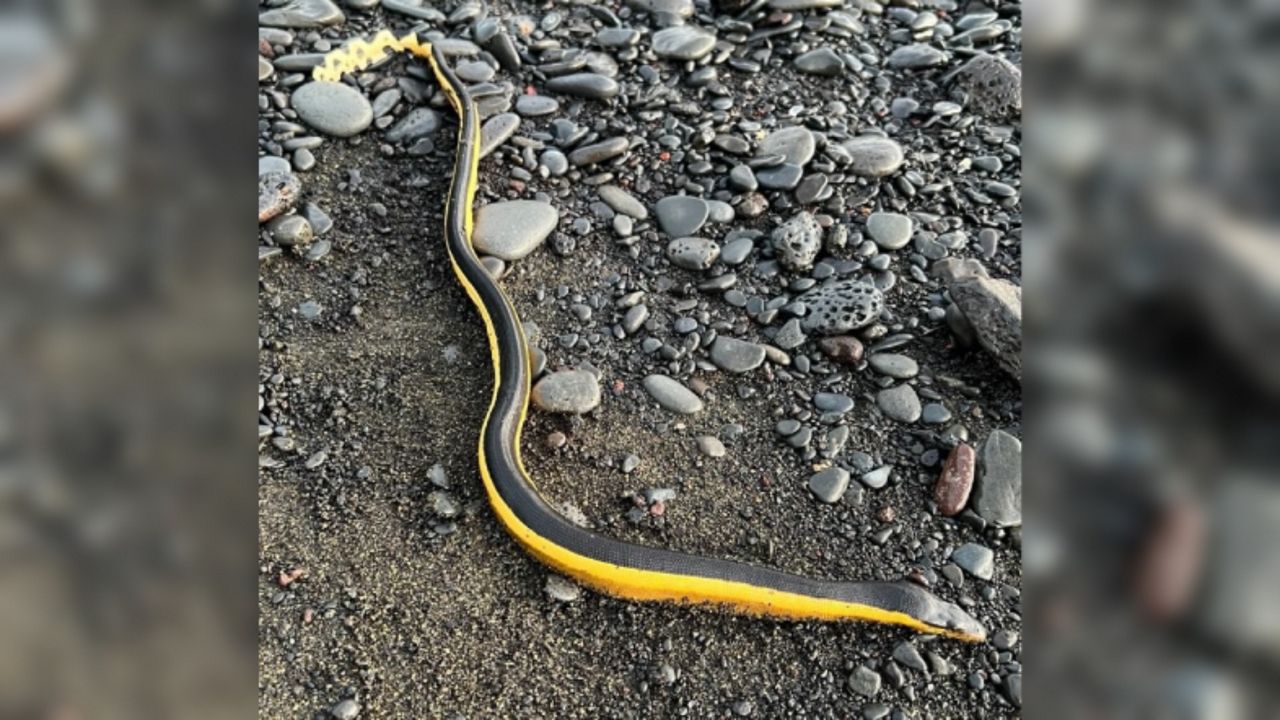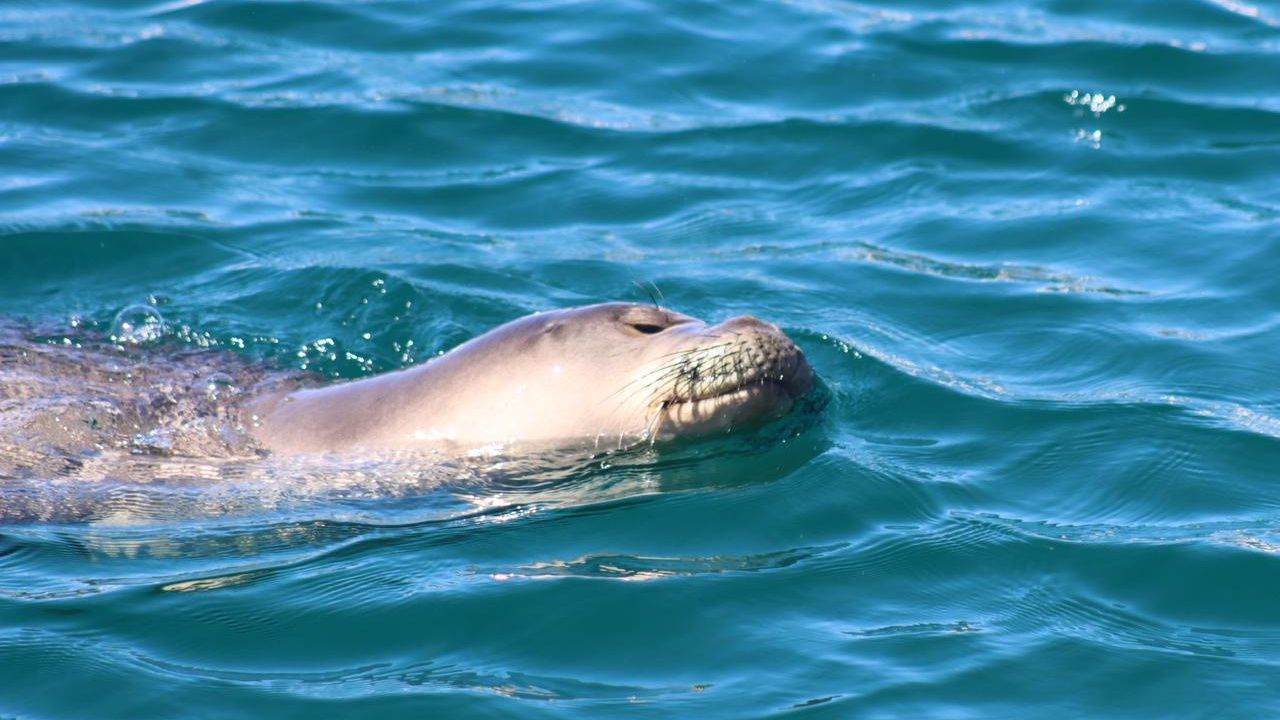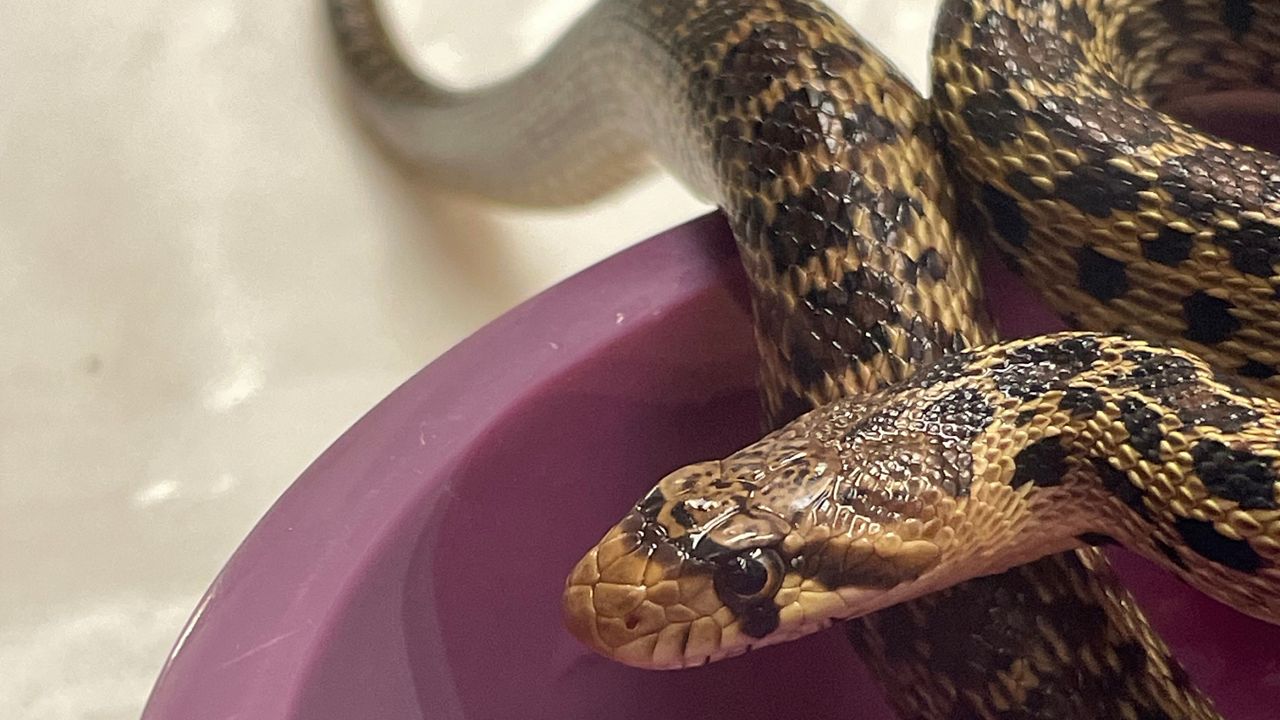Agriculture inspectors caught a three-and-a-half foot snake on Sunday night in a Kaimuki backyard after the property owner reported it.
The resident told the Hawaii Department of Agriculture he first saw the snake in the afternoon, and thought it was a child’s toy. However, later in the evening, he saw the snake moving around and immediately called 911.
Honolulu police officers dispatched to the scene called the HDOA Plant Quarantine Branch at 10:15 p.m. and sent photos of the snake.
A team from PQB, who arrived around 11:30 p.m., used snake tongs — a tool that can grab and hold a snake at a distance — to capture the non-venomous ball python.
Inspectors believe the snake is an escaped pet, because it was docile while being captured and handled. Ball pythons are common in the pet trade. Native to Western and West-Central Africa, they are constrictors that subdue their prey (small mammals and birds) by coiling around and suffocating them. The PQB is currently safeguarding the snake.
It is illegal to own a pet snake or bring a snake to Hawaii. Possessing illegal animals in Hawaii is a class C felony, and those charged may face fines up to $200,000 and five years in prison. HDOA encourages anyone with a snake to turn it in under the state’s Amnesty Program, which allows individuals to bring illegal animals to any zoo or aquarium, the Hawaii Department of Agriculture office or the Hawaiian Humane Society without being facing criminal or civil penalties if done before an infestation is started. Animals turned in will not be euthanized. Instead, the animals may be used for educational purposes, transferred to a municipal zoo or moved to a facility on the mainland.
There are no snakes in Hawaii, except for the brahminy blind snake, a small non-venomous snake from Asia and Africa that resembles an earthworm. Snakes and large reptiles pose a threat to the ecosystem, since they have no natural predators.
In Guam, the brown tree snake was accidentally introduced in the 1940s and has had a devastating impact on the island, where it killed most of the island’s native bird population.
Michelle Broder Van Dyke covers the Hawaiian Islands for Spectrum News Hawaii. Email her at michelle.brodervandyke@charter.com.




